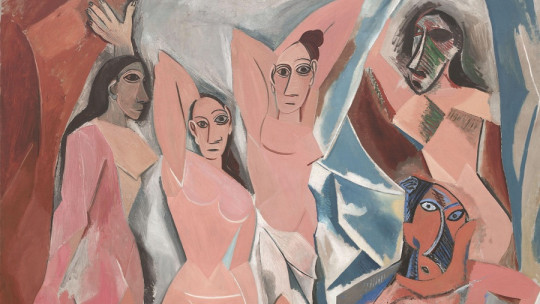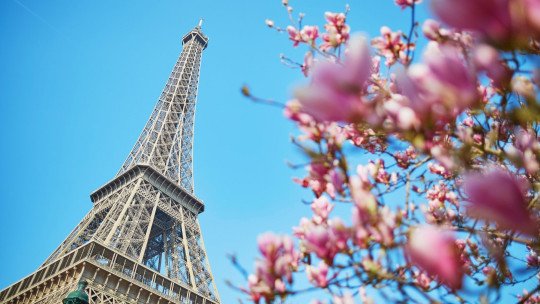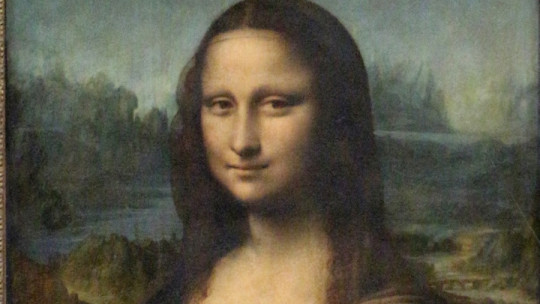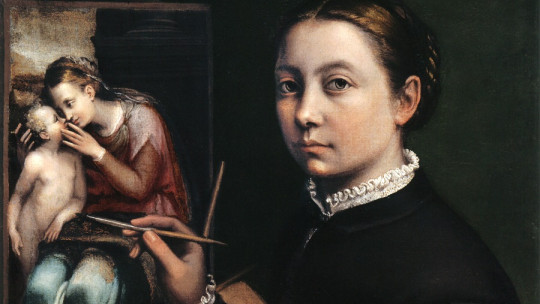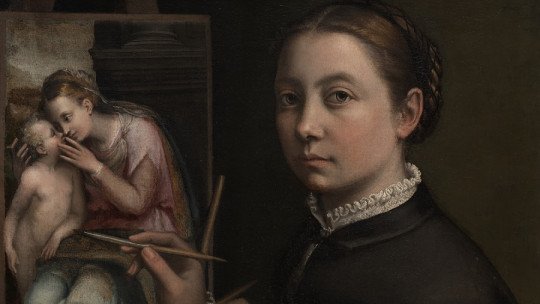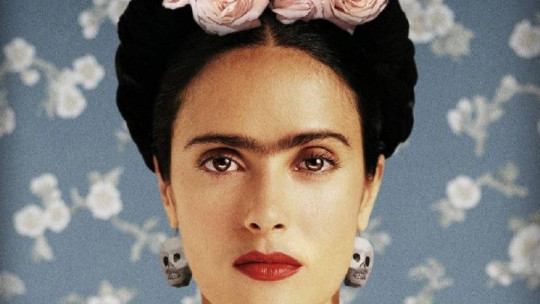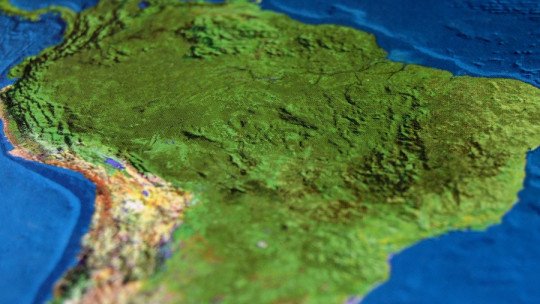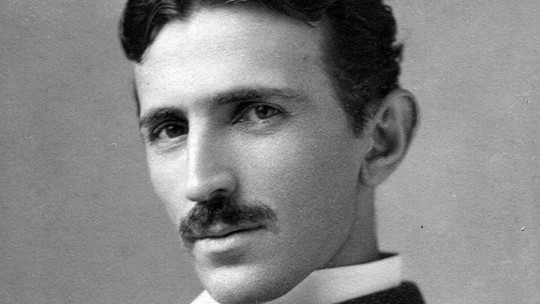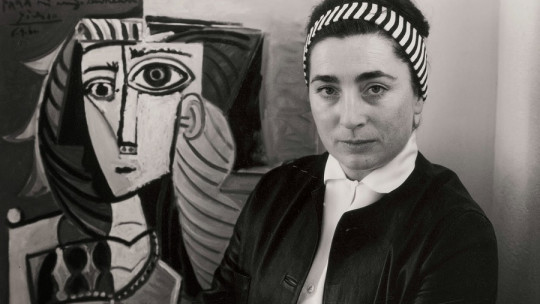
At work Women in their toiletdated 1937, Picasso portrays, using the collage technique, three women who are dedicated to their personal toilet.
On the surface, it may seem like a peaceful domestic scene, but the reality is much more disturbing. Because Picasso represented the three women who, in those years, revolved around his life: his still wife Olga Khokhlova (they were separated, but never filed for divorce), his young lover Marie-Thérèse Walter, with whom he had had a daughter , and the photographer Dora Maar, whom he had met two years before and with whom he had an intense relationship.
What did Picasso intend with that painting? Dora appears in the center of it, with her legs crossed in the shape of an X, in a nervous and tense attitude; On the left side of her, Olga combs her hair, while, on the right side of the painting, Marie-Thérèse holds a mirror in which Picasso’s face is reflected.
The stormy relationship that Picasso had with women is well known The issue has caused rivers of ink to flow, and those who blame him for a toxic and narcissistic use of his relationships are not without reason. The reality is, however, more complex, since each and every one of them inspired him in one way or another and were the pillars on which Picasso’s work was based.
Picasso’s women: a complex story
In the book he wrote about his relationship with the painter, Françoise Gilot claimed that she was the only one who had left him voluntarily and that she had not lost her mind after their separation He is not without reason, although there are nuances. But it is true that Olga and Marie-Thérèse suffered greatly with their “replacement”, and that Marie-Thérèse committed suicide a few years after the painter’s death. On the other hand, Dora Maar, who, again according to Gilot, was her most intelligent lover, lost her mind and ended up admitted to a sanatorium. Almost nothing.
Why did Picasso act like this with his women? What magnetism did he exert on them? To understand the complex relationship that the artist had with them we must go back to his childhood in Malaga. Picasso grew up surrounded by female figures: his mother, his two maiden aunts and his two sisters. We can draw a psychological profile from this: Picasso was used to being “served” by women and being the center of their attention.
Obviously, we cannot fully enter a person’s mind. Only Picasso knew why he behaved like this. However, we can collect clues in his biography that can help us reconstruct his psychological picture. It must also be taken into account that these relationships have also generated a good dose of rumors and legend, and sometimes it is difficult to distinguish reality from fantasy.
The women who inspired him
Below, you will find a brief sketch of 7 of the women who were part of Picasso’s life. Some of his relationships were extremely fleeting, such as Odette, the girl who was his first Parisian lover, and Germaine, the sister of the first, with whom it seems that Picasso also had relations. There are many more, but in this article we will only focus on Picasso’s 7 most important women; which They had a powerful influence on his life and work
1. Fernande Olivier (1881-1966), the first great companion
Fernande was his first official companion and one of the people who helped him the most during his first times in Paris. In 1904, Picasso shared a studio in Montmartre with other artists, named Bateau-Lavoir due to its similar appearance to one of the Seine laundry boats. They say that it was one August afternoon, under torrential rain, that Fernande and Picasso locked eyes for the first time. She was about to enter the Bateau, soaked to the skin. From then on, she would become her muse. The two would share 8 years of life, until their final breakup in 1912.
However, this does not mean that Picasso did not alternate Fernande with other women. Picasso’s custom of “combining” relationships is well known, as if he did not dare to end a romantic relationship until he found a replacement. When he began his affairs with Fernande, he was still seeing Madeleine, the mysterious model who posed for some of his first paintings.
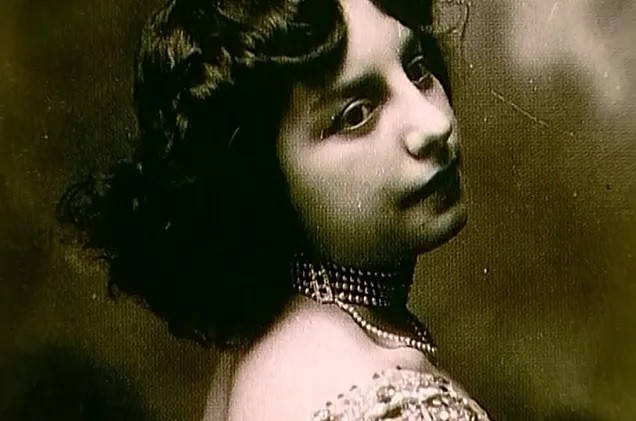
In 1910, Fernande underwent surgery. That same summer they had spent some time in Horta de San Juan, where the artist studied the landscape for his paintings and, according to some biographers, became infatuated with the daughter of the inn’s owners. Years later, Fernande published a book in which she recounted her life with Picasso, and in which the painter was quite badly off. She died poor and abandoned in 1966.
2. Eve Gouel (1885-1915), a tragic end
Picasso met what would become his second official companion in 1911, the same year in which he and his friend Apollinaire were accused of having participated in the robbery of the Monna Lisa and of being involved in the disappearance of some Iberian statuettes from the Louvre. He had not yet separated from Fernande, but their relationship, immersed in an acute crisis, was now practically unsalvageable.
It seems that with Eve Picasso he found a certain stability, both sentimental and emotional. An indicative fact is that, in 1913, he introduced the young woman to her family. He probably would have married her if the terrible illness had not appeared that, two years later, would kill Eve at the age of 30.
The decline and death of his companion plunged the painter into a state of deep despair, which, however, did not prevent him from throwing himself into the arms of other women, such as Gabrielle Despinasse, a young woman from Montparnasse, with whom he even spent a secret vacation in Saint -Tropez, while Eve was dying. It is clear that Picasso always needed a woman by his side, and when one “left” (with death, in this case), he quickly replaced her with another The great genius felt incapable of living alone.
3. Olga Khokhlova (1891-1955), the first wife
Picasso had met Jean Cocteau in Paris and they had become friends. It was Cocteau who, in 1917, asked the artist to design the sets for the ballet For the. Enthusiastic about the project, which takes him out of the gloomy existence into which he has plunged after Eve’s death, Picasso travels to Rome to meet the company that will represent the show. Among the dancers is Olga Khokhlova, a twenty-six-year-old girl who dazzles the painter.
Much has been said about what the passionate and often eccentric Picasso saw in this bourgeois lady who was by no means the most intelligent or the most cultured of his conquests. To tell the truth, and as stated by Olivier Widmaier Picasso, the artist’s grandson, in his book Picasso, family portraits, Olga was a conventional woman, who aspired to a quiet life as a wife and mother surrounded by comforts. Be that as it may, Picasso falls in love with the Russian dancer and follows the company throughout Europe In July 1918, the two finally married.
In February 1921, Paulo, the couple’s first and only child, was born. Picasso lives a peaceful and quiet life with his wife and son, and seems to have rediscovered that peace that Eve’s death had cut short. But will it be forever?
4. Marie-Thérèse Walter (1909-1977), the very young lover
In 1927, Picasso met a 17-year-old girl, blonde, with limpid blue eyes and a voluptuous body that made her look older than she was. Her name is Marie-Thérèse Walter. In a statement he gave to Lydia Gasman in 1972, Marie-Thérèse stated that Picasso approached her as she was leaving the Galeries Lafayette in Paris. Apparently, The painter told him that he had an “interesting” face and that he would like to paint it Soon, the 45-year-old man from Malaga goes crazy for her youngest and makes her her lover. He is still married to Olga.
The double life of Picasso, who sees Marie-Thérèse in secret, is led more or less in secret until 1935, the year in which she gives birth to her daughter María de la Concepción (Maya). From then on, a divorce process begins that will never end, partly due to Olga’s fierce reluctance, who She will officially remain Picasso’s wife until his death in 1955
Abandoning one woman for another, and even overlapping them for a time, seems to be a constant in the artist’s sentimental life. Shortly after the birth of his daughter, Picasso meets in the cafe Les Deux Margots from Paris to the photographer Dora Maar.
5. Dora Maar (1907-1997), going crazy for love
Picasso’s new love is an attractive, cultured woman with fine intelligence and a sense of humor, as well as independent and determined. Really named Henriette Theodora Markovitch, she soon changes her name to Dora Maar. Victoria Combalía, a specialist in her life and work, had a telephone conversation with her when Maar was almost ninety years old From these conversations he concluded that she was a very observant, intelligent and reserved person.
When Combalía spoke with Maar, she was already immersed in her withdrawal from the world; she practically she alone she read and prayed. After Picasso abandoned her, Dora sank and she seemed to lose her mind, to the point of entering a sanatorium. Sad end for a woman who had stood out for her independence, resolution and energy. Dora Maar was with Picasso when he produced his great work: the Guernica. The photographer documented the entire creation process and even helped the painter in the process. Maar and Picasso matched each other perfectly, both intellectually and sentimentally, since both were cultured, intelligent and sympathizers of the left. They understood each other.
As was also usual, Picasso “combined” Maar and Marie-Thérèse for a time. But while the first knew about the existence of the second (and Maya), Marie-Thérèse knew nothing about Dora. Until they both coincided in the study of Guernica… And, meanwhile, in 1943, Picasso met Françoise Gilot.
6. Françoise Gilot (1921), the only one who abandoned him
Picasso meets a very young Françoise in the restaurant Le Catalan. At the time of writing, she is the only one of Picasso’s wives still alive.
Françoise proved to be a strong and self-confident woman, since she was the only one who dared to abandon the artist Like Fernande Olivier and Geneviève Laporte, one of the lovers Picasso “matched” with her, Françoise wrote a book about her relationship, the famous Life with Picasso, which infuriated the painter. Picasso even filed a lawsuit, but Françoise won the lawsuit.
In Life with Picasso, the author portrays the artist as a man of bad character, who told her that she meant nothing to him. With these words Picasso may have wanted to demonstrate her superiority and his control over her, but Françoise remained firm. In her book, she states that she abandoned him because she knew that Picasso could not remain faithful for long, and that, therefore, the same end awaited him as the others. How right. Françoise decided to follow her own life and get away from a stormy relationship that did not benefit her at all.
With Picasso she had Claude, born in 1947, and Paloma, who came into the world in 1949 and who received her name from the work that Picasso was doing at that time: the dove of peace insignia.
7. Jacqueline Roque (1927-1986), the last companion
A young 26-year-old Jacqueline met a 72-year-old Picasso in the ceramics workshop where she worked. They immediately began to see each other and, as Olga Khokhlova had died in 1955 and he was now free, they both married in 1961. Jacqueline will be the muse of Picasso’s last paintings and will be at his side until the painter’s death, which occurred in 1973
The similarity between Roque’s ending and that of his predecessor Marie-Thérèse is disturbing. In 1986, Jacqueline shot herself in Mougins, which adds to the legend of the macabre and sad end of all the women who paraded through the genius’s life.

